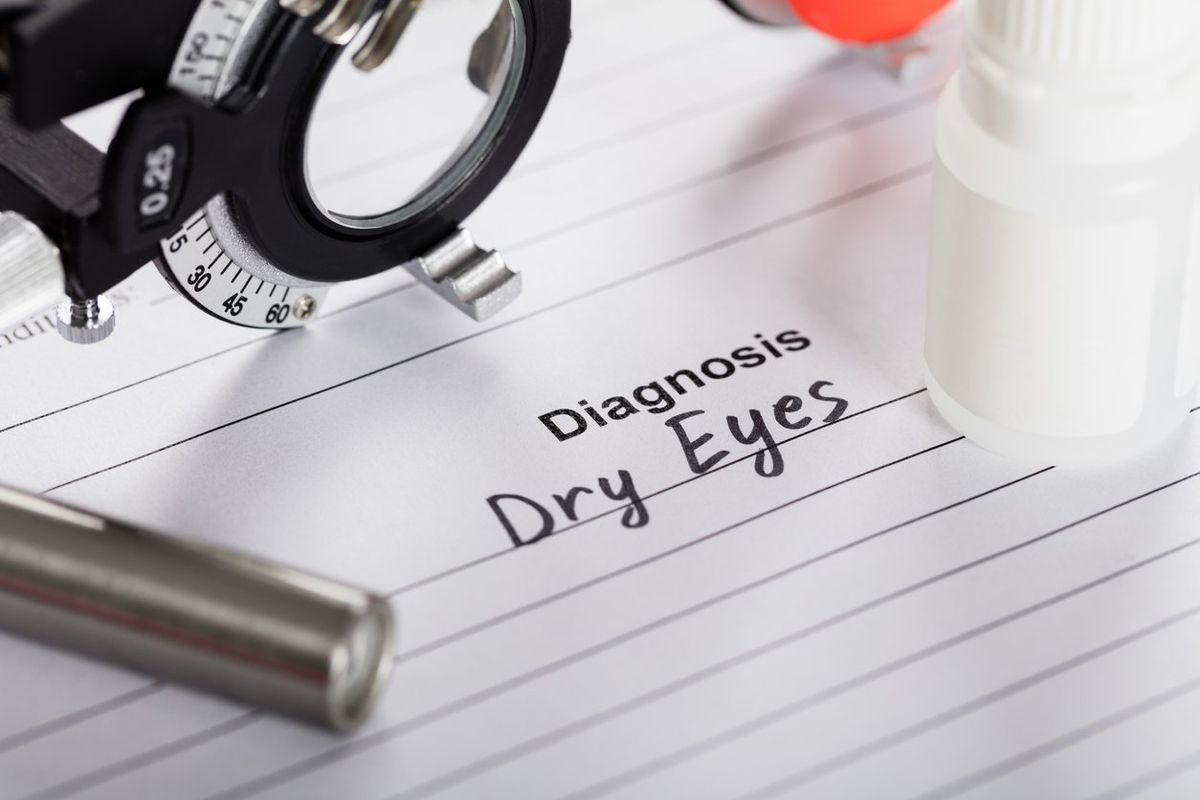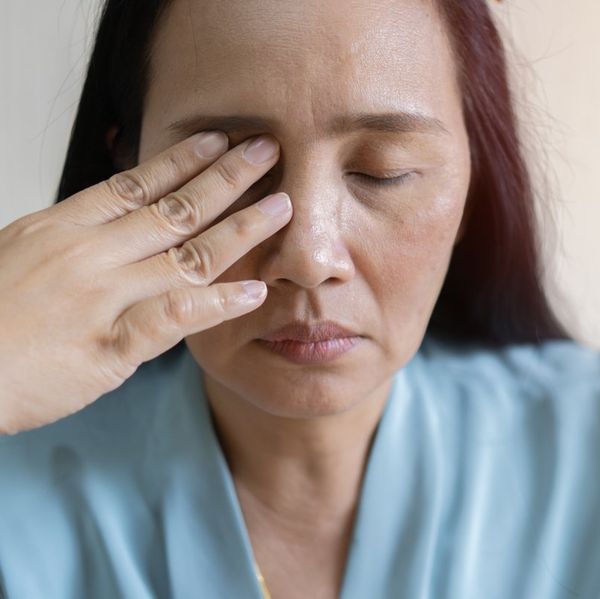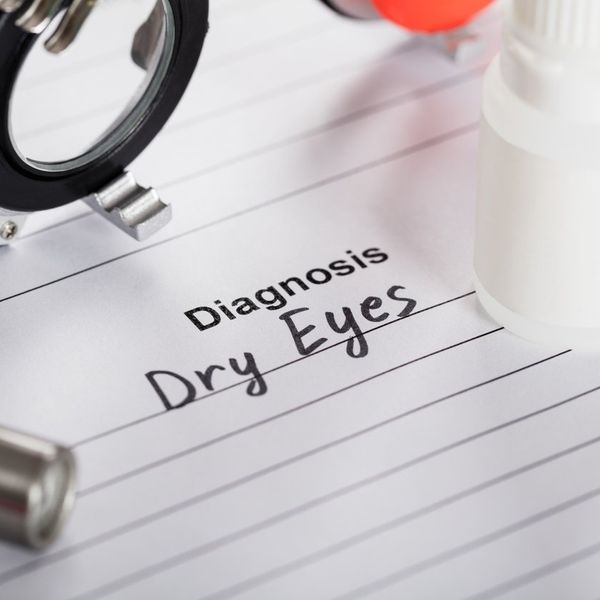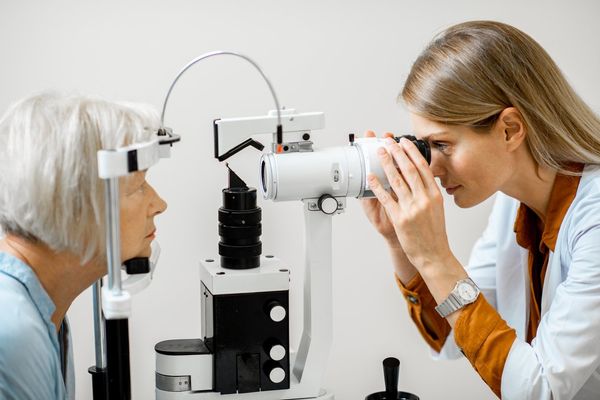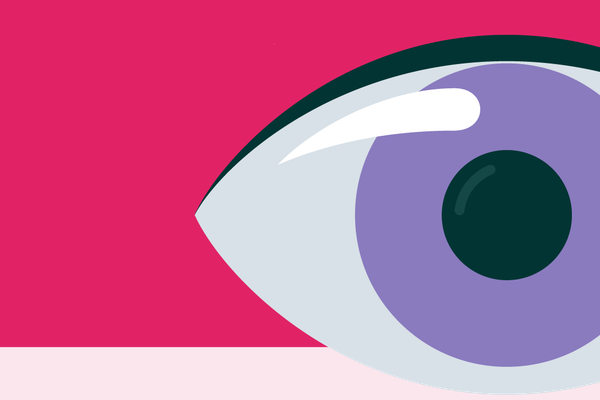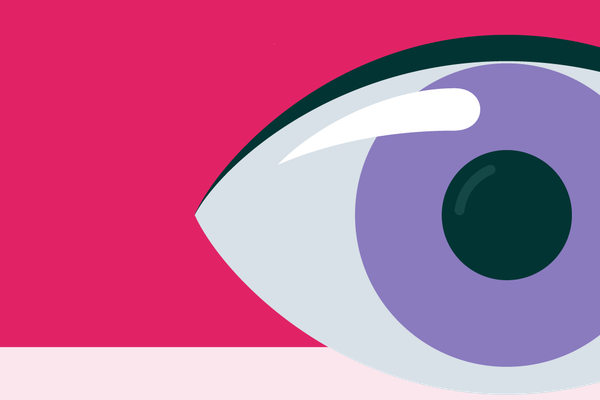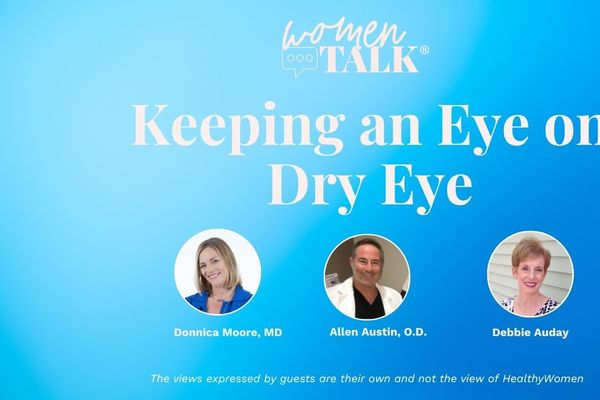Tears are for more than expressing emotion during your favorite Nicholas Sparks movie — they also clean and moisturize your eyes.
About 16 million people in the United States have been diagnosed with a condition known as dry eye disease, where you don’t make enough tears or they dry up too quickly. And it’s more common in women — especially around menopause. If you have dry eye disease, you might notice you wake up in the morning with dry eyes that are gritty, red and irritated. Dry eyes can also cause blurry vision. Luckily, there are treatment options that can help.
What is dry eye disease?
Every time you blink, tears spread over the surface of the eye, lubricating, cleaning and keeping your vision clear. This is your body’s tear film, which consists of three layers: the oily outside layer, the middle watery layer and the inner mucus layer.
If you don’t make enough tears or they evaporate too quickly, you can end up with dry eyes. While everyone can experience dry eyes occasionally, dry eye disease is a medical condition that can be chronic, meaning it lasts for a long time.
There are two types of dry eye disease, with most people having a combination of the two.
- Evaporative dry eye: Here, you’re making enough tears, but you are missing the oily outer layer that keeps the tears from evaporating too quickly.
- Aqueous-deficient dry eye: This type means you aren’t producing enough tears to adequately moisten your eye.
What are the symptoms of dry eye disease?
Dry eye disease can feel like your eyes are gritty, or that you have something in your eye. Besides feeling scratchy, you might also notice:
- Redness, stinging or burning
- Light sensitivity
- Blurred vision (especially while reading)
- Changes in vision
- Pain or pain when wearing contacts
- Stringy mucus in or near your eye
- Watery eyes
What are the risk factors for dry eye disease?
There are certain factors that put you at increased risk for dry eye disease that you don’t have control over, such as being over age 50 or assigned female at birth.
Other risk factors can include:
- Contact lens use
- Medications such as diuretics (water pills), cold and allergy medications, and some antidepressants
- A history of certain eye conditions or other medical conditions like rheumatoid arthritis, lupus, diabetes and Sjögren’s syndrome
- Staring or focusing for long periods of time without blinking, such as while reading
- Excessive screen usage
- Having LASIK eye surgery or cataract surgery
- Cosmetics such as lash extensions
- Living in dry, windy climates or being around smoke
Some people think there may be a connection between dry eyes and headaches. One 2021 study showed there may be a link between people with dry eyes and migraine attacks.
How is dry eye disease diagnosed?
To be diagnosed with dry eye disease, you may see an ophthalmologist or optometrist, doctors who specialize in treating eye conditions, and do a full eye exam. This includes looking at your eyes and how they blink, as well as asking you about the medications you’re taking and if you have any other health conditions.
Your ophthalmologist might do a few tests, including:
- Slit lamp test: This is to check if your eyes are producing tears.
- Schirmer’s test: Using a small piece of paper held against your lower eyelid, your doctor can see how many tears are wetting the paper.
- Tear break up time (TBUT) test: This test checks how long your tear film stays on your eyes after you blink.
How can you manage or treat dry eye disease?
There are a variety of treatment options available for dry eye disease to discuss with your eye care professional. These include:
- Over-the counter-options: Artificial tears, gels, ointments and eyelid cleaning solutions can offer relief from some DED symptoms.
- Prescription medicines: Can treat dry eyes in a variety of ways, such as decreasing inflammation or increasing tear production.
- Silicone plugs: Your doctor might recommend silicone plugs placed in the tear ducts to keep tears on your eyes longer.
- Special contacts: Wearing special contacts can help protect the eye.
- In-office procedures: Eye care professionals use medical devices involving heat or light to help open up glands in the eye so oil can flow out better to lubricate the eye.
You might also consider asking your eye care professional about supplements or vitamins for dry eyes, such as:
- Omega-3 fatty acids: Eating foods containing omega-3 like salmon, tuna and sardines could help boost tear production. However, supplements may not be as effective as other treatments.
- Vitamin A: Might help improve the tear film and lubricate your eyes.
- Vitamin D: Research has shown that taking vitamin D may improve eye health by addressing vitamin D deficiency that is associated with dry eye disease. It also may increase how effective some eye drops are.
- Vitamin B12: Using vitamin B12 along with eye drops may help repair nerve damage that is causing your symptoms and could help improve them.
Additional Resources
- What You Need to Know About Dry Eye Disease - HealthyWomen ›
- Getting the Right Diagnosis & Treatment for Dry Eye Disease - HealthyWomen ›
- What You Need to Know About Dry Eye Disease - HealthyWomen ›
- Facts About Dry Eye Disease - HealthyWomen ›
- Información relacionada con el trastorno de ojo seco - HealthyWomen ›
- How Dry Eye Can Affect Your Life - HealthyWomen ›
- En qué forma el ojo seco afecta tu vida - HealthyWomen ›
- Obtener el diagnóstico y tratamiento adecuados para el trastorno de ojo seco - HealthyWomen ›
- WomenTalk: Keeping an Eye on Dry Eye - HealthyWomen ›

